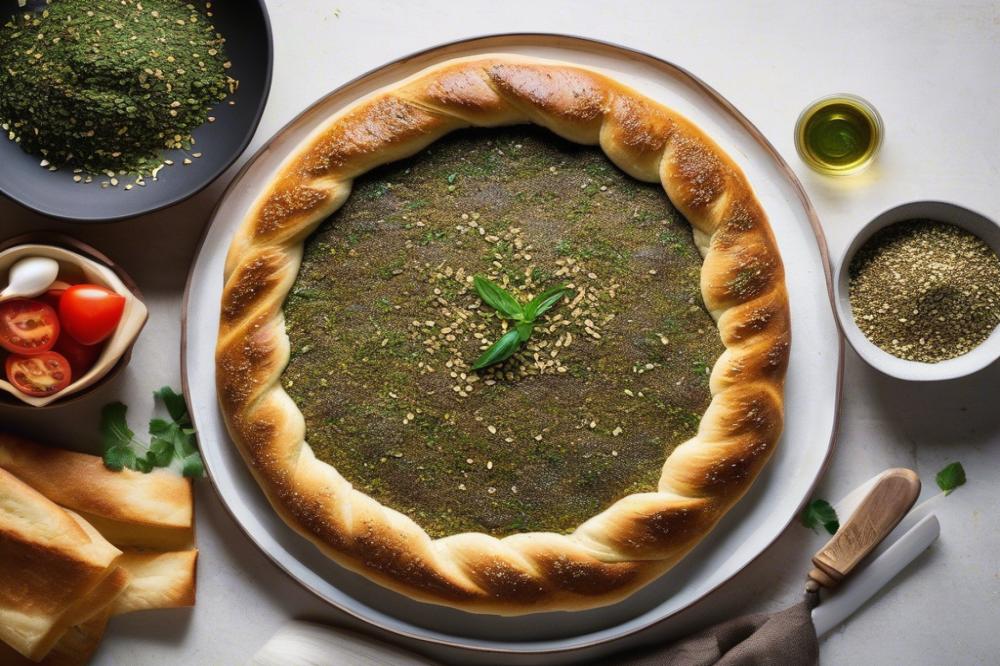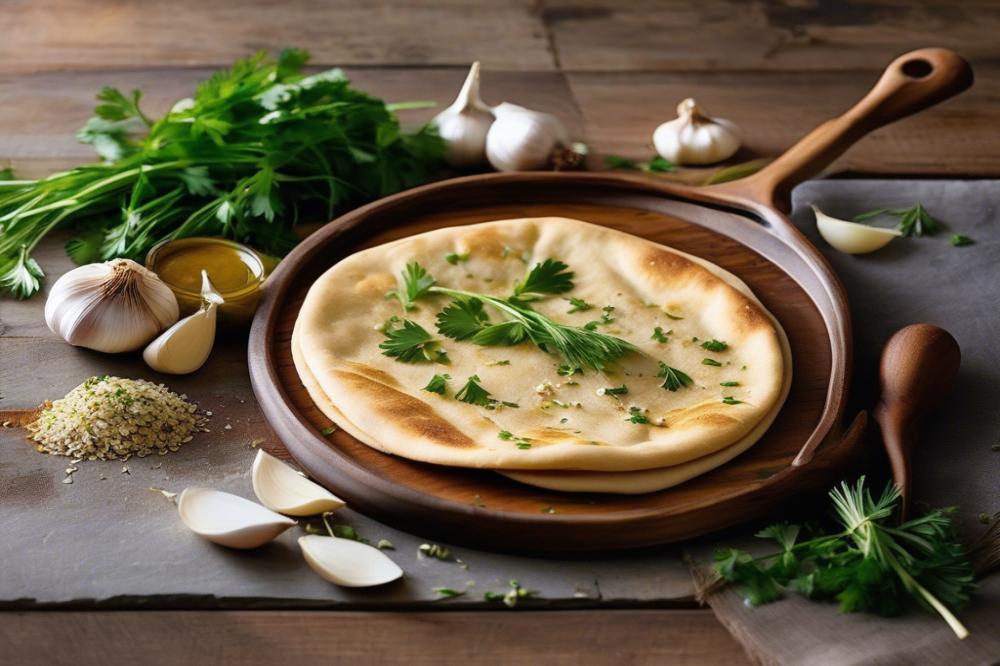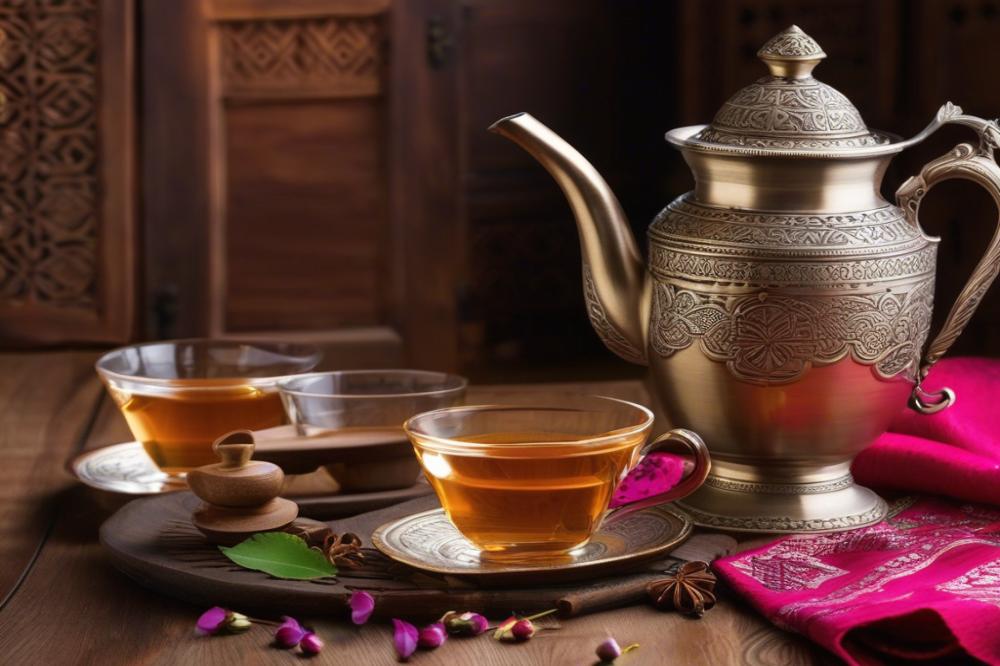Introduction
Lebanese cuisine is a vibrant tapestry woven together by the diverse cultures and regions of Lebanon. It offers a rich array of flavors, colors, and aromas that reflect its history and geography. This culinary tradition plays a crucial role in the daily lives of Lebanese people. Meals bring families together and highlight the warmth of hospitality. Each dish tells a story, connected to the land and the people.
A popular traditional recipe within this rich culinary landscape is Manakish, a delightful flatbread that has long been a favorite in Lebanese households. This dish can be enjoyed any time of day, especially as a breakfast dish. Thick or thin, the dough serves as a perfect base for various toppings. A particularly celebrated variation is Zaatar, a blend of aromatic herbs and spices that transforms the flatbread into a savory pastry. Many people find the combination of fresh herbs and olive oil irresistible.
The love for Zaatar Manakish extends beyond Lebanon and has become a beloved staple in Middle Eastern food culture. Street vendors often sell it hot and fresh, making it a popular choice for those on the go. From bustling markets to quiet bakeries, the aroma of baking bread infused with herbs enchants passersby. Enjoyed by locals and visitors alike, this dish perfectly represents the essence of communal dining and shared experiences within the Middle Eastern region.
What is Manakish?
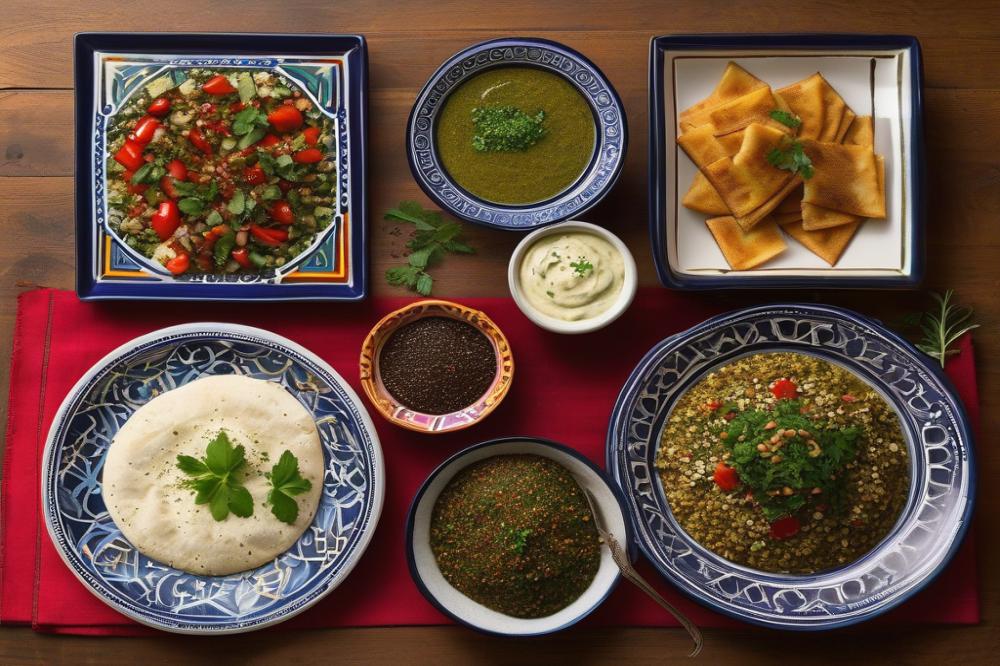
Manakish is a type of flatbread that has a special place in Lebanese cuisine. This savory pastry is often topped with a mixture of herbs, particularly zaatar, and drizzled with olive oil. The combination of flavors makes it a favorite among many. Traditionally, it is baked until golden brown, offering a delightful crunch on the outside and a soft, warm center.
Variations of this dish exist across the Middle East. Some people enjoy it topped with cheese or minced meat, reflecting local tastes and preferences. As a breakfast dish, it serves as a quick and satisfying option for many families. In bustling markets and streets, manakish stands fill the air with mouthwatering aromas, inviting everyone to indulge. It is not only a staple for breakfast but also a popular street food enjoyed at any time of the day.
The cultural importance of manakish in Lebanon cannot be overstated. It often brings people together during gatherings and celebrations. Families appreciate sharing this dish, making it a symbol of hospitality. Additionally, it features prominently during casual outdoor meals. Whether at a picnic or a family get-together, this flatbread serves as an essential part of daily life. Many Lebanese people hold fond memories of enjoying manakish with loved ones. Its presence signifies warmth, friendliness, and a connection to cultural traditions.
Ingredients and Quantities
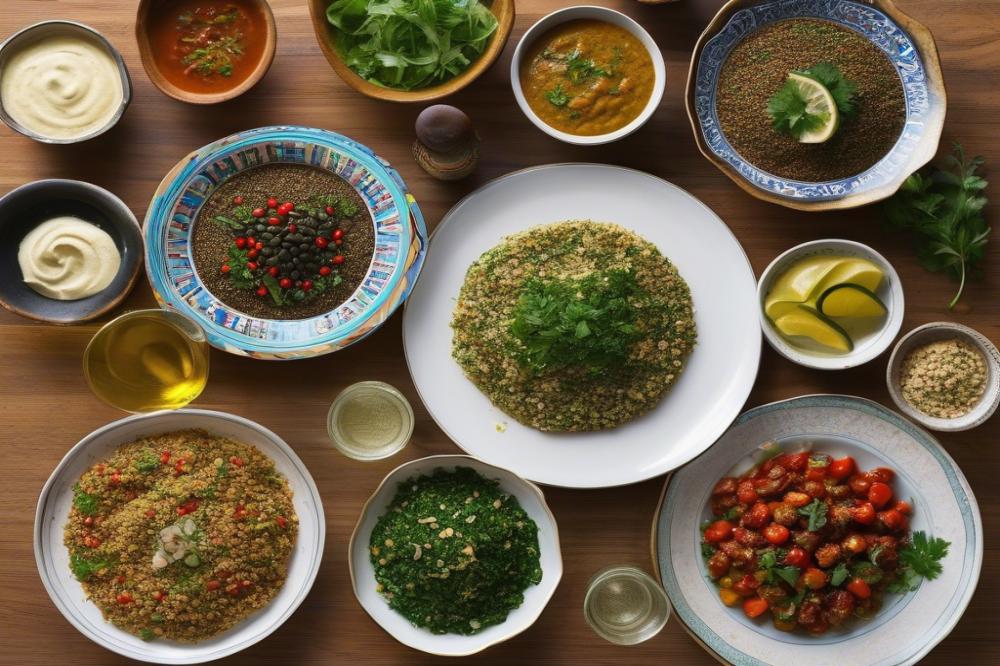
To prepare the Lebanese zaatar manakish, gather the following ingredients. Each element plays a significant role in creating this tasty flatbread.
- 3 cups all-purpose flour
- 1 cup warm water (approximately 110°F/43°C)
- 2 tablespoons olive oil
- 1 teaspoon salt
- 2 teaspoons instant yeast
- 1/2 cup zaatar spice blend
- 3 tablespoons additional olive oil for spreading
Each ingredient provides unique flavors and textures. Flour acts as the base, creating a soft dough. Water activates the yeast, helping the dough rise. Olive oil adds richness and moisture. Salt enhances overall taste and balance. Instant yeast plays a crucial role in making the dough fluffy and light.
The zaatar spice blend consists mainly of thyme, oregano, and sesame seeds. This blend adds a savory taste, making it an ideal topping. The herbs included in zaatar offer numerous health benefits. They are rich in antioxidants and can help reduce inflammation. Furthermore, the olive oil used in the recipe is packed with healthy fats, beneficial for heart health.
Each tablespoon of olive oil contains about 120 calories, along with essential nutrients. The flour contributes mostly carbohydrates, providing energy. Zaatar herbs are not only flavorful but also support digestion and boost immunity. Preparing this breakfast dish puts a spotlight on the health benefits of traditional Lebanese cuisine.
When baking this savory pastry, remember to allow the dough to rise adequately. It leads to a better texture once baked. Enjoying a warm piece of manakish with the savory zaatar mix makes for a delightful street food experience.
Method of Preparation
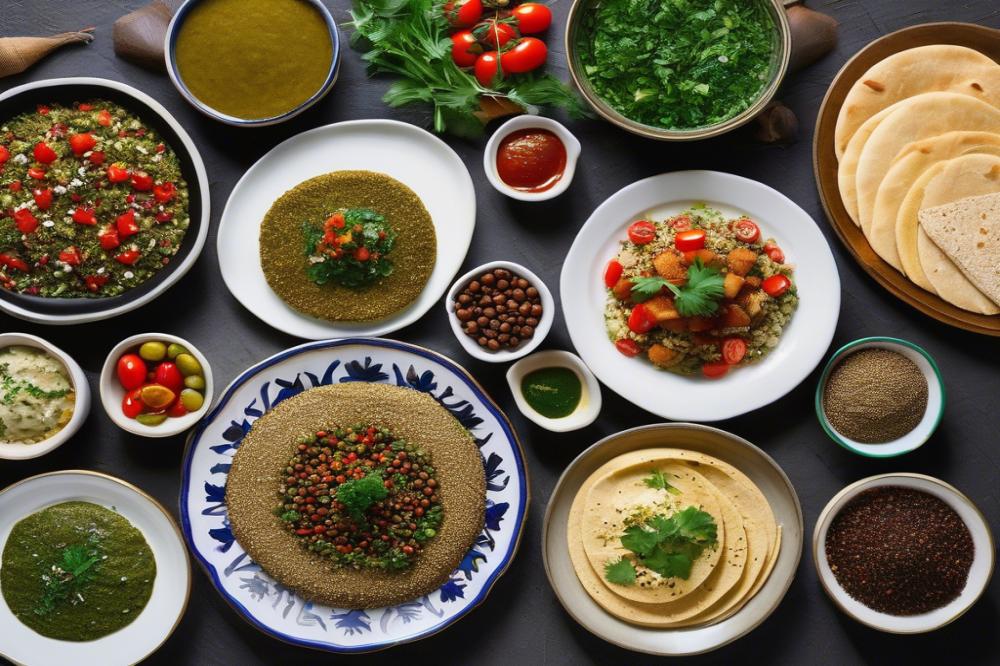
Step-by-step instructions for making Manakish Zaatar
Making this flavorful flatbread is not too difficult. Begin with the dough. Combine flour, water, yeast, and salt in a large bowl. Use your hands or a spoon to mix until it forms a rough mass. Kneading the dough is an important step. Place the mixture on a clean surface. Knead it for about 10 minutes. The goal is to create a smooth and elastic texture. After kneading, form a ball and place it in a well-oiled bowl. Cover it with a damp cloth and let it rise for about an hour. This resting period will help it double in size, making it perfect for a traditional recipe.
Mixing, kneading, and preparing the dough
While the dough is rising, it’s time to prepare the zaatar mix. This blend of herbs is essential to this Lebanese cuisine dish. In a small bowl, combine zaatar spice, sesame seeds, and some salt. Gradually pour in olive oil while mixing. The mixture should be thick, but not too dry. Once combined, set the zaatar aside. When the dough has risen, punch it down gently to release air. Divide it into equal pieces based on your desired size for flatbreads. Roll each piece into a ball and let them rest for 15 minutes. This allows the gluten to relax, making them easier to shape.
How to prepare the Zaatar mix and assemble the flatbreads
Now for the fun part—shaping the flatbreads! Taking one dough ball, flatten it with your fingers. Aim for about half an inch thick. Use a rolling pin for more uniform shapes if needed. After shaping, spread a generous amount of the zaatar mixture over the surface. Make sure to cover it evenly. Repeat this process with the remaining dough balls. Each one should be filled with the savory mixture.
Baking instructions and tips for achieving the perfect texture
Preheat your oven to a high temperature, around 450°F (232°C). If you have a baking stone, place it in the oven to heat. This will give that desirable crispy texture. Use parchment paper on a baking sheet if you don’t have a stone. Place the prepared flatbreads on the parchment. Bake them for about 10 to 12 minutes, or until edges are golden brown. Watch them closely to avoid burning. They should be fluffy and just slightly crisp on the outside. Once finished, remove them from the oven. Allow the savory pastries to cool for a few minutes before serving. Enjoying your freshly baked zaatar flatbread is perfect for breakfast or as a tasty street food snack.
Serving Suggestions
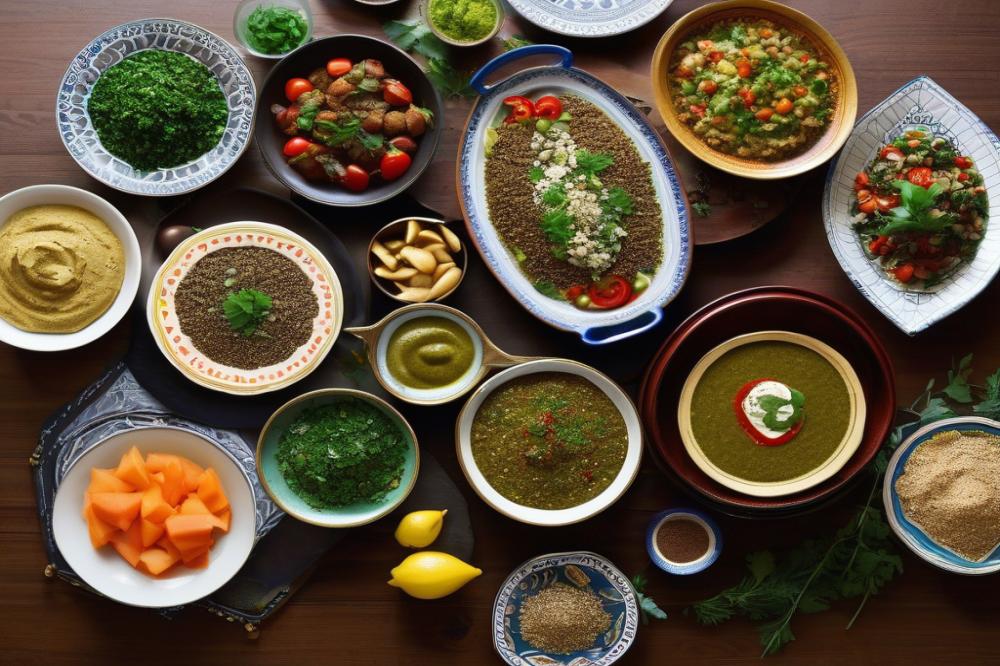
Ways to Serve Manakish Zaatar
Serve this savory pastry fresh from the oven. Cutting it into wedges makes sharing easy and fun. Enjoy it warm to appreciate the blend of herbs and olive oil. A drizzle of extra virgin olive oil on top adds richness. Served alongside fresh vegetables, it becomes more delightful. People enjoy it with cheese, labneh, or yogurt for a creamy contrast.
Pairing Ideas with Beverages and Sides
A warm beverage complements the dish well. Consider serving it with mint tea or Arabic coffee for a traditional touch. Freshly squeezed lemonade offers a refreshing balance to the rich flavors. Pair it with simple salads or pickles to add a crunchy element. These sides enhance the overall dining experience, making it even tastier.
Cultural Traditions Surrounding the Consumption of Manakish
In Lebanon, enjoying this breakfast dish is a common practice. Families often gather to share it, turning a simple meal into a social event. Street food vendors offer it, showcasing its popularity across different ages. Festivals and celebrations sometimes feature this flatbread as a staple. Sharing it during gatherings highlights the warmth of Lebanese hospitality, making every bite a cherished moment.
Variations of Manakish
Many options exist for toppings and fillings that can be put on flatbread. Zaatar, a mix of dried thyme, sumac, sesame seeds, and olive oil, is the classic choice. Other popular variations include cheese, minced meat, or vegetables. Each version provides a different taste experience. Some people enjoy the addition of tangy labneh or yogurt, while others might prefer a touch of spicy pepper.
This rich diversity stems from regional variations within Lebanese cuisine. In the north, for example, you might find manakish topped with a robust cheese blend. Further south, vendors might offer more spice in their filling. Different herbs are often used based on local ingredients. These nuances contribute to the culinary landscape of Lebanon.
When comparing Lebanese manakish to other Middle Eastern food, similarities and differences emerge. For instance, za’atar is popular across various countries, but preparation methods vary widely. Some flatbreads are grilled rather than baked, leading to a different texture and flavor. Unlike manakish, which can be fluffy, others might be flat and crisp, altering the eating experience. Street food culture in Lebanon rises to meet this range, with pastries being served in many forms and flavors.
This savory pastry has become a beloved part of breakfast dishes. People across Lebanon enjoy the flavorful mix of herbs and olive oil as a simple start to their day. As a result, manakish has found a special place on breakfast tables, adding a comforting touch to morning routines.
Final Thoughts on Manakish Zaatar
The significance of manakish in Lebanese cuisine cannot be overstated. It is more than just a dish; it embodies comfort, community, and cultural heritage. Enjoying this savory flatbread is a cherished ritual that many families partake in. Often shared among loved ones, it brings people together over hearty meals and lively conversation. This traditional recipe, rooted in history, represents the heart of many Lebanese households.
Trying your hand at making this delightful item at home can be a rewarding experience. Start with fresh ingredients and follow the steps carefully. Feel the dough come alive as you knead it. Watch the aroma of zaatar fill your kitchen. The process itself is a joyful journey, connecting you to the culinary traditions of Lebanon. Don’t hesitate to experiment with different toppings; make it your own while respecting its origins.
In today’s world, food experiences are about blending cultures and sharing flavors. Manakish is no exception to this trend. It has evolved, appearing in cafes and restaurants around the globe. People are discovering the timeless joy of this dish. Each bite transports you to the bustling streets of Beirut or the quiet charm of a Lebanese village. Embracing this dish opens opportunities to connect with a rich culinary tapestry that continues to inspire chefs and home cooks alike.

